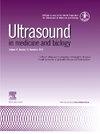From Guidelines to Intelligence: How AI Refines Thyroid Nodule Biopsy Decisions
IF 2.6
3区 医学
Q2 ACOUSTICS
引用次数: 0
Abstract
Objective
To evaluate the value of combining American College of Radiology (ACR) Thyroid Imaging Reporting and Data System (TI-RADS) with the Demetics ultrasound diagnostic system in reducing the rate of fine-needle aspiration (FNA) biopsies for thyroid nodules.
Methods
A retrospective study analyzed 548 thyroid nodules from 454 patients, all meeting ACR TI-RADS guidelines (category ≥3 and diameter ≥10 mm) for FNA. Nodule was reclassified using the combined ACR TI-RADS and Demetics system (De TI-RADS), and the biopsy rates were compared.
Results
Using ACR TI-RADS alone, the biopsy rate was 70.6% (387/548), with a positive predictive value (PPV) of 52.5% (203/387), an unnecessary biopsy rate of 47.5% (184/387) and a missed diagnosis rate of 11.0% (25/228). Incorporating Demetics reduced the biopsy rate to 48.1% (264/548), the unnecessary biopsy rate to 17.4% (46/265) and the missed diagnosis rate to 4.4% (10/228), while increasing PPV to 82.6% (218/264). All differences between ACR TI-RADS and De TI-RADS were statistically significant (p < 0.05).
Conclusion
The integration of ACR TI-RADS with the Demetics system improves nodule risk assessment by enhancing diagnostic and efficiency. This approach reduces unnecessary biopsies and missed diagnoses while increasing PPV, offering a more reliable tool for clinicians and patients.
从指南到智能:人工智能如何改进甲状腺结节活检决策。
目的:评价美国放射学会(ACR)甲状腺影像报告与数据系统(TI-RADS)与Demetics超声诊断系统联合应用对降低甲状腺结节细针穿刺活检率的价值。方法:回顾性分析454例患者的548个甲状腺结节,所有患者均符合ACR TI-RADS指南(分类≥3,直径≥10 mm)。采用联合ACR TI-RADS和Demetics系统(De TI-RADS)对结节进行重新分类,并比较活检率。结果:单独使用ACR TI-RADS,活检率为70.6%(387/548),阳性预测值(PPV)为52.5%(203/387),不必要活检率为47.5%(184/387),漏诊率为11.0%(25/228)。合并Demetics可使活检率降至48.1%(264/548),不必要活检率降至17.4%(46/265),漏诊率降至4.4% (10/228),PPV提高至82.6%(218/264)。ACR TI-RADS与De TI-RADS差异均有统计学意义(p < 0.05)。结论:ACR TI-RADS与Demetics系统的集成可提高结节风险评估的诊断和效率。这种方法减少了不必要的活组织检查和漏诊,同时增加了PPV,为临床医生和患者提供了更可靠的工具。
本文章由计算机程序翻译,如有差异,请以英文原文为准。
求助全文
约1分钟内获得全文
求助全文
来源期刊
CiteScore
6.20
自引率
6.90%
发文量
325
审稿时长
70 days
期刊介绍:
Ultrasound in Medicine and Biology is the official journal of the World Federation for Ultrasound in Medicine and Biology. The journal publishes original contributions that demonstrate a novel application of an existing ultrasound technology in clinical diagnostic, interventional and therapeutic applications, new and improved clinical techniques, the physics, engineering and technology of ultrasound in medicine and biology, and the interactions between ultrasound and biological systems, including bioeffects. Papers that simply utilize standard diagnostic ultrasound as a measuring tool will be considered out of scope. Extended critical reviews of subjects of contemporary interest in the field are also published, in addition to occasional editorial articles, clinical and technical notes, book reviews, letters to the editor and a calendar of forthcoming meetings. It is the aim of the journal fully to meet the information and publication requirements of the clinicians, scientists, engineers and other professionals who constitute the biomedical ultrasonic community.

 求助内容:
求助内容: 应助结果提醒方式:
应助结果提醒方式:


